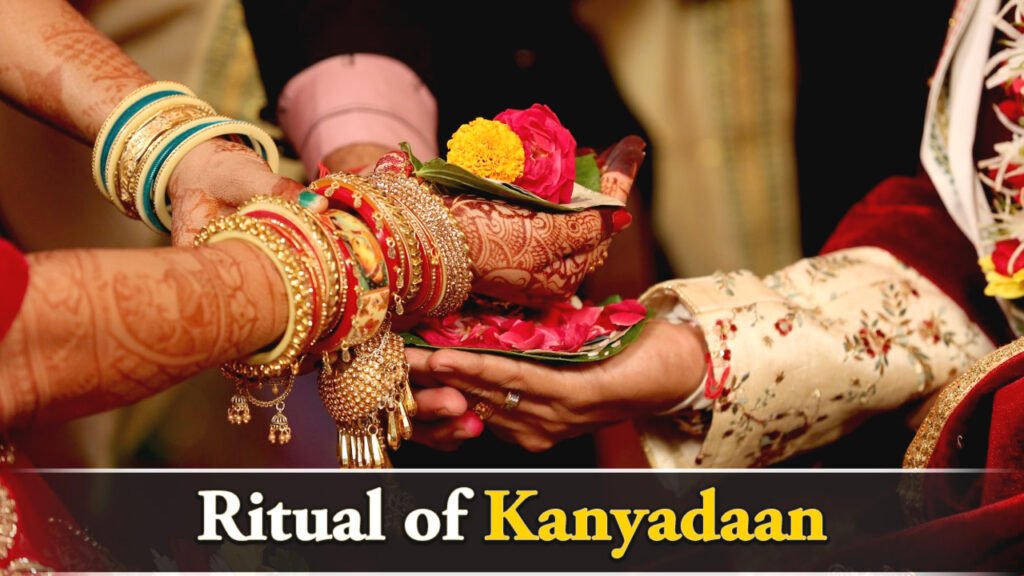Introduction to Ritual Of Kanyadaan
Ritual Of Kanyadaan, a sacred ritual in Hindu weddings, holds immense significance in Indian culture. The term “Kanyadaan” literally translates to “giving away the daughter” in Sanskrit. It’s a pivotal moment during the wedding ceremony where the bride’s parents entrust their daughter to the groom. But what makes this ritual so special? Let’s dive into the depths of this age-old tradition and uncover its hidden meanings.
Historical Background of Kanyadaan
The roots of Ritual Of Kanyadaan can be traced back to ancient Hindu scriptures. It’s mentioned in texts like the Manusmriti and various Puranas. Historically, it was seen as a way for parents to ensure their daughter’s well-being and prosperity. Can you imagine how this tradition has evolved over thousands of years?
Significance of Kanyadaan in Hindu Weddings
In Hindu philosophy, Ritual Of Kanyadaan is considered one of the most selfless acts a father can perform. It’s believed to bring immense spiritual merit to the parents. But it’s not just about religious brownie points. This ritual symbolizes the transition of a daughter from her childhood home to her marital life. It’s a bittersweet moment, filled with emotions and hopes for the future.
Symbolism Behind the Ritual
Ever wondered why water is poured during Kanyadaan? It represents the flow of love and blessings from the parents to the couple. T
he bride’s hand being placed in the groom’s symbolizes the union of two souls. Every gesture in this ritual is packed with meaning. It’s like a beautiful dance of symbols, each step telling a story of love, trust, and new beginnings.
Preparation for Kanyadaan
Preparing for Ritual Of Kanyadaan isn’t just about arranging flowers and mantras. It’s an emotional journey for the family. Parents often spend days reflecting on their daughter’s childhood, preparing themselves for this significant moment. The bride, too, goes through a rollercoaster of emotions. It’s a time of excitement, nostalgia, and sometimes, a pinch of anxiety.
Step-by-Step Procedure of Kanyadaan
Invocation of Deities
The ritual begins with invoking the blessings of various gods and goddesses. It’s like sending out a divine invitation, asking the celestial beings to witness and bless the union.
The Bride’s Entrance
The bride enters, usually accompanied by her maternal uncle or brother. Can you picture the hush that falls over the gathering as she walks in, radiant and nervous?
The Father’s Role
This is where things get emotional. The father of the bride takes center stage. He holds his daughter’s right hand, ready to place it in the groom’s hand. It’s a moment that often brings tears to everyone’s eyes.
The Groom’s Acceptance
The groom extends his hand to receive the bride’s. This simple gesture carries the weight of a lifelong commitment. It’s not just accepting a hand; it’s accepting a whole new life and responsibility.
Mantras and Blessings
As the hands join, the priest chants sacred mantras. These ancient Sanskrit verses are like a cosmic seal on the union, invoking divine blessings for the couple’s future.
Modern Interpretations of Kanyadaan
In today’s world, Ritual Of Kanyadaan has seen some modern twists. Some couples choose to have both sets of parents participate, making it a more inclusive ritual. Others modify the wording to reflect a more equal partnership. It’s fascinating to see how this ancient tradition adapts to contemporary values.
Emotional Aspects of Kanyadaan
Let’s talk about the emotional rollercoaster that is Ritual Of Kanyadaan. For the bride, it’s a mix of excitement for her new life and sadness at leaving her childhood home. Parents often find themselves overwhelmed with pride and a tinge of sorrow. Even the toughest dads have been known to shed a tear or two during this ritual!
Variations in Different Indian Regions
India’s diversity shines through even in this ritual. In some regions, the mother plays a more prominent role. In others, additional elements like tying sacred threads or exchanging garlands are incorporated. It’s like a beautiful tapestry of traditions, each region adding its unique colors.
Controversies Surrounding Kanyadaan
It wouldn’t be fair to ignore the controversies. Some view Ritual Of Kanyadaan as outdated, arguing that it objectifies women. Critics say it reinforces patriarchal norms. But defenders of the tradition argue that it’s about love and letting go, not ownership. What do you think? Is there a middle ground?
Kanyadaan in Popular Culture
Bollywood has given us some iconic Kanyadaan scenes. Remember the tearjerker moments in movies like “Dilwale Dulhania Le Jayenge” or “Kabhi Khushi Kabhie Gham”? These scenes have shaped how many people view this ritual, adding a touch of glamour and drama to the traditional ceremony.
The Future of Kanyadaan in Contemporary Society
As society evolves, so does the interpretation of Ritual Of Kanyadaan. Many couples are finding ways to make it more egalitarian. Some are even skipping it altogether. The future of this ritual seems to be heading towards a more symbolic, less literal interpretation. It’s adapting, just like everything else in our fast-changing world.
Alternatives to Traditional Kanyadaan
Creative couples are coming up with alternatives. Some opt for a mutual exchange of vows instead. Others involve both sets of parents in a joint blessing ceremony. These alternatives aim to capture the essence of Kanyadaan – love, blessings, and new beginnings – without the traditional implications.
Impact of Kanyadaan on Gender Roles
It’s worth pondering how Ritual Of Kanyadaan influences gender roles in society. Does it reinforce traditional views, or can it be reimagined to promote equality? Many modern couples are using this ritual as a platform to express their commitment to an equal partnership. It’s becoming less about ‘giving away’ and more about ‘coming together’.
For interesting astrology-related videos, subscribe to us on YouTube
Conclusion
Kanyadaan, with its deep roots and evolving interpretations, remains a significant part of Hindu weddings. It’s a ritual that bridges the past and present, filled with emotion, symbolism, and cultural significance. Whether one views it as a beautiful tradition or a custom in need of updating, its essence of love and new beginnings continues to touch hearts. As we move forward, the ritual of Ritual Of Kanyadaan serves as a reflection of our changing society, adapting while still honoring its core values.
Read Also: What Caused Lord Shiva To Take Poison
FAQs
- Is Kanyadaan mandatory in Hindu weddings?While traditional, Kanyadaan is not mandatory. Many couples choose to include it, while others opt for modifications or alternatives.
- Can mothers participate in Kanyadaan?Absolutely! Many modern ceremonies involve both parents in the Kanyadaan ritual.
- What if the bride’s father is not present?In such cases, another male relative like an uncle or elder brother can perform the ritual.
- Does Kanyadaan have any legal significance?Kanyadaan is a cultural and religious ritual and does not have legal implications in itself.
- Can Kanyadaan be performed in inter-faith marriages?Yes, if both parties agree. Many inter-faith couples incorporate elements from both traditions in their wedding ceremony.

